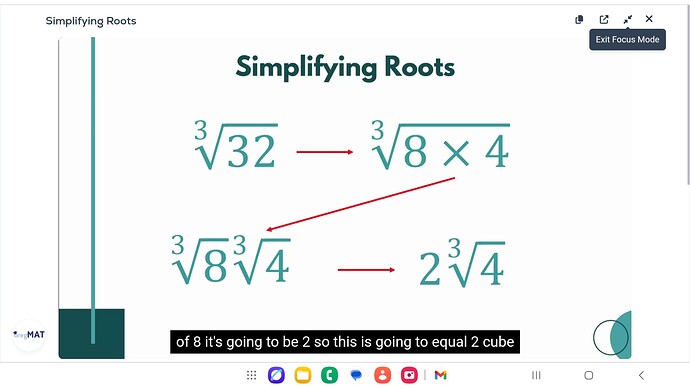Hi Greg,
In the concept Simplifying Roots, there is an example where you simplify the cube root of 32.
You explained that this becomes the cube root of (8 × 4), and then you took out the cube root of 8 and wrote it as 2.
Earlier, under the root rules, you mentioned that for odd roots (like cube roots), the answer could be either positive or negative.
So I’m a bit confused: why didn’t you choose –2 here, and only used +2? Could you please explain why?
Thank you!
